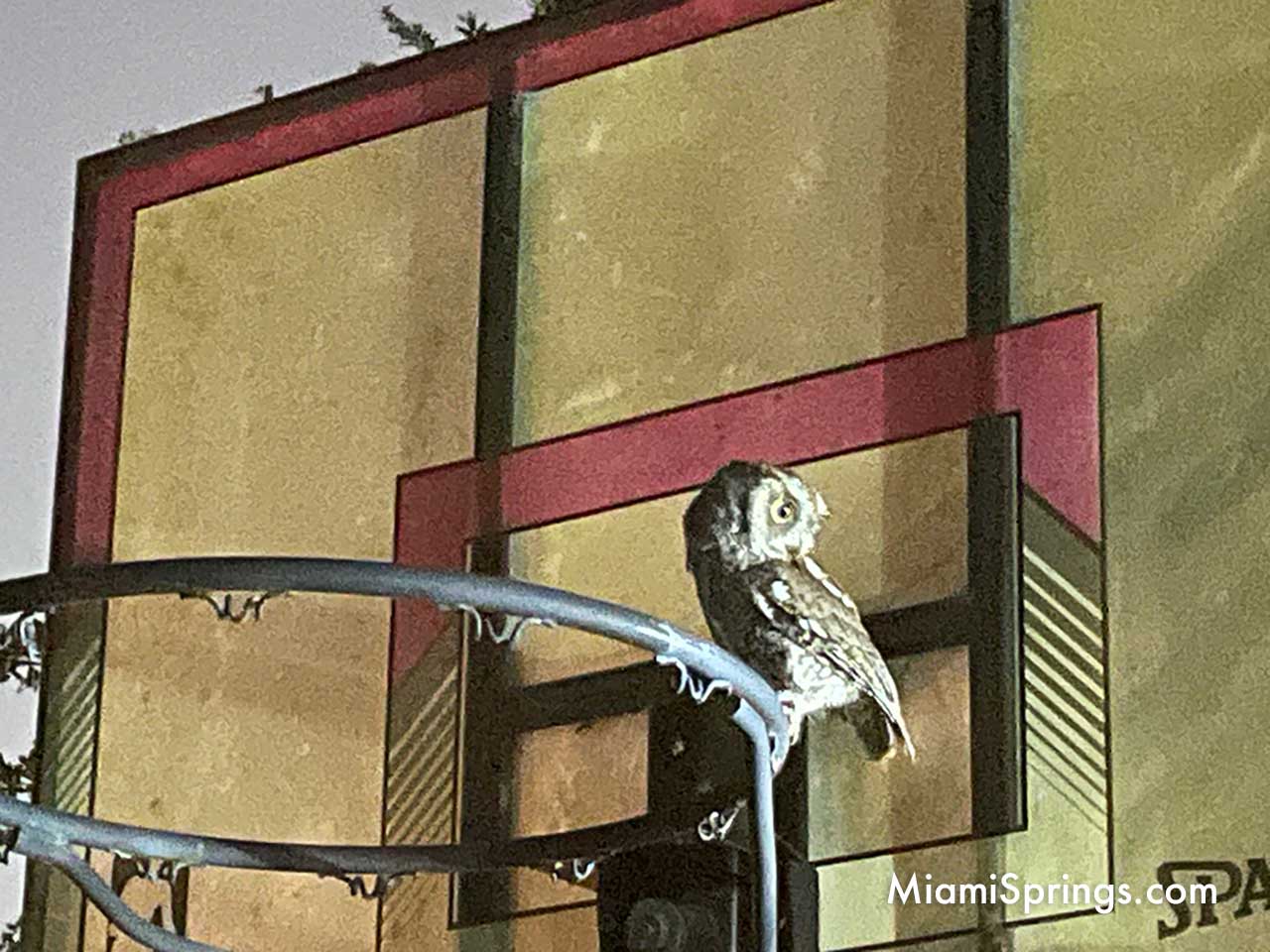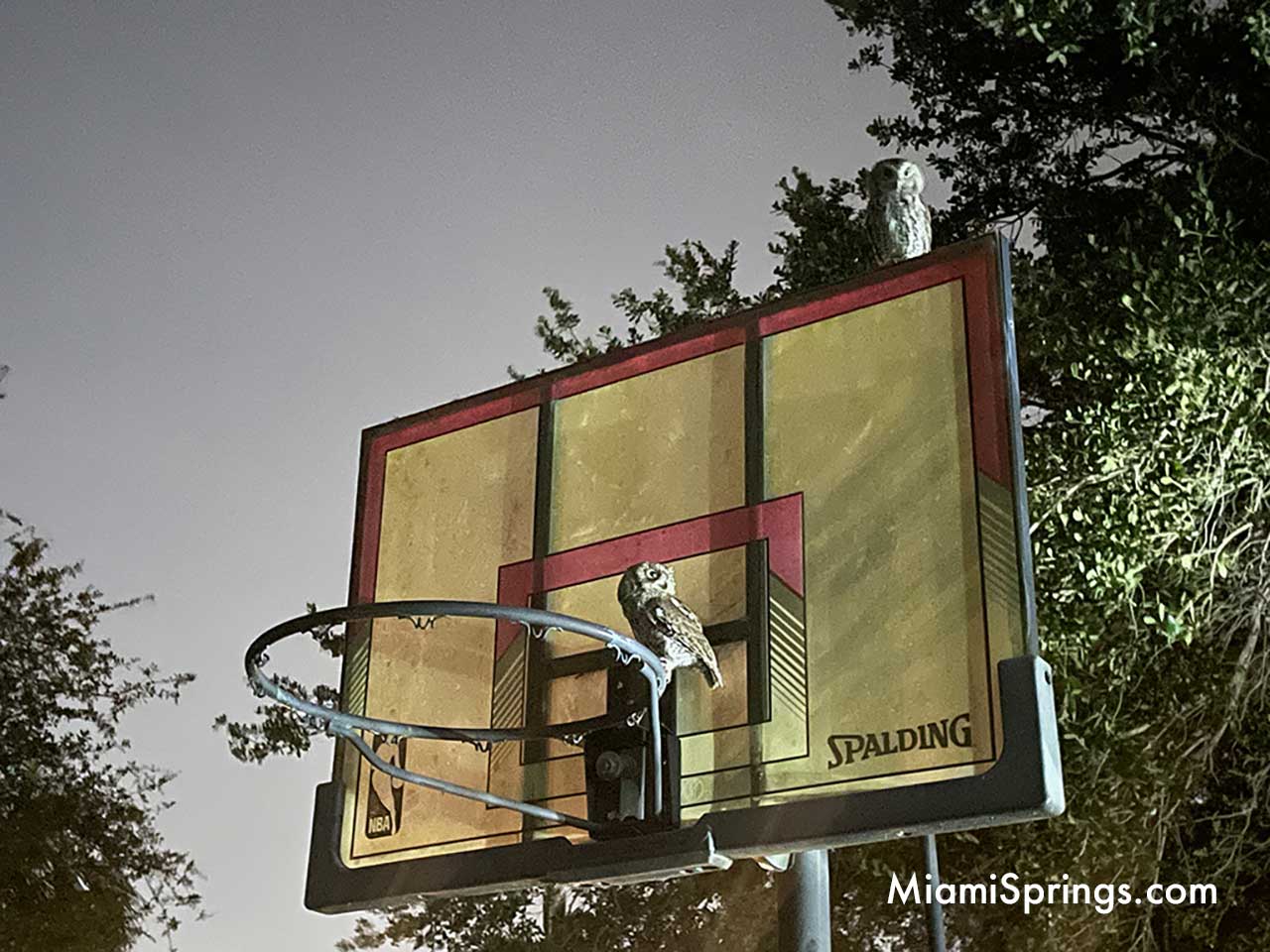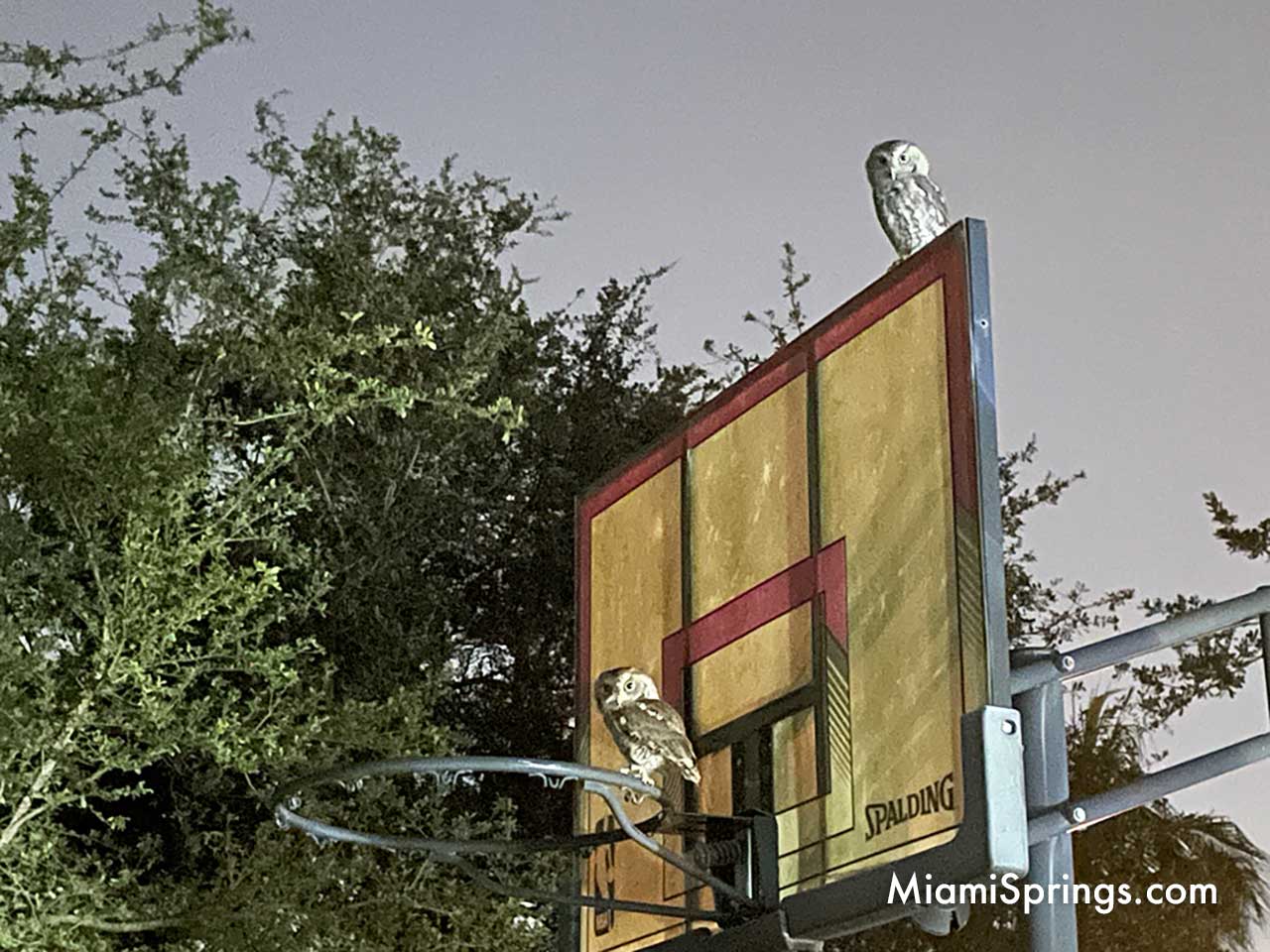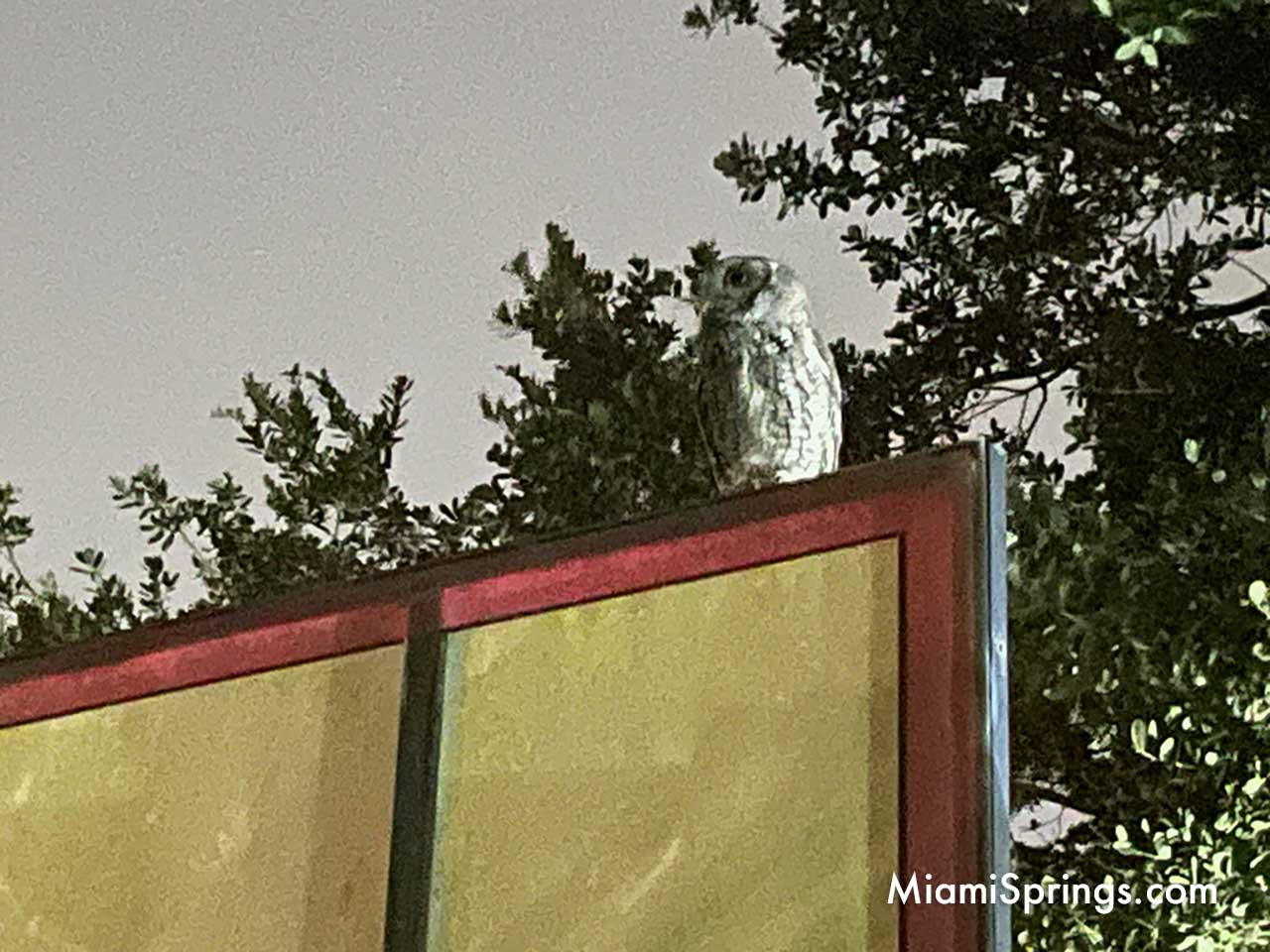A few nights ago we had the pleasure of being greeted by a beautiful owl in our driveway. I had just pulled up in my wife’s SUV after having dinner with my family when I noticed a small owl on top of my pickup truck.
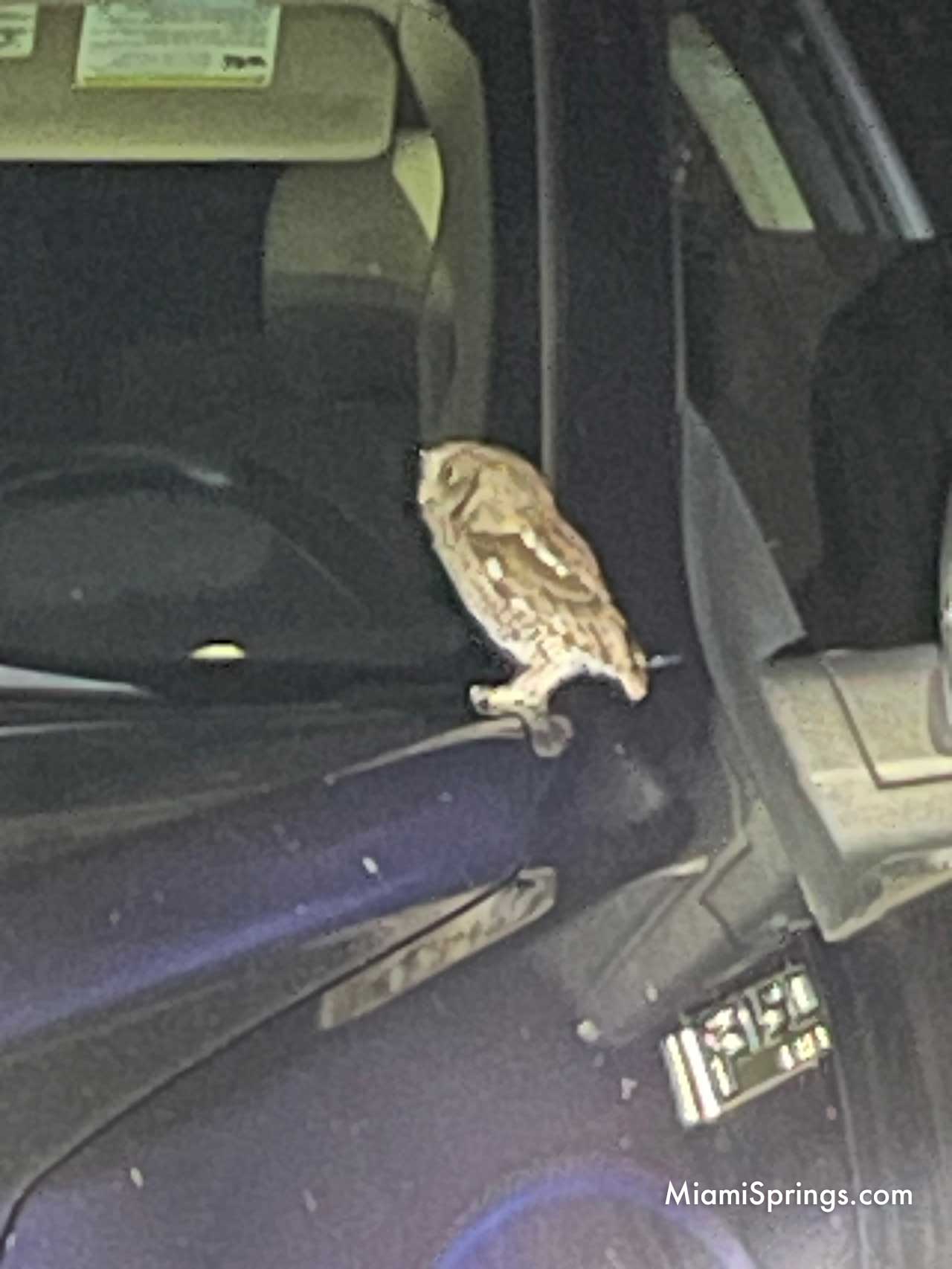
My immediate reaction was to tell my wife and kids to be quiet and not to open a single door. After getting their attention, I pointed out that there was an owl on the hood of my truck. I was able to take the picture above.

Unfortunately, as soon as I opened the door, the owl flew away. However, it didn’t fly very far. As we looked up we noticed that the owl had flown up to a basketball hoop that we have on the driveway.
“Awesome!” I thought. “I get to take some cool pics of the owl.”
However, I was given a second gift. We had two owls! One was on the basketball hoop. The other was on the top of the backboard.
We slowly crept up near the basketball hoop and took pictures. The owls were very much aware of our presence, but they were cool and calm. They rewarded us by just hanging out and letting us take some pictures.
Miami Springs has an abundance of incredible wildlife. We are blessed to enjoy such a wide variety of bird species including Blue Jays, Ibis, Orioles, Parrots, Egyptian Geese, Hawks, and even the occasional Flamingo. We’re so used to some of them, like the Muscovy Ducks, that we don’t think twice sometimes. Nevertheless, it’s beautiful to be able to enjoy such a wide variety of God’s creatures without every leaving town.
REMINDER: Miami Springs is a bird sanctuary. That means it’s illegal to catch, kill, or trap birds within our community.
In my 34 years of living in Miami Springs, I’ve only ever spotted these owls from a distance…No closer than 100 feet. And I’ve only seen owls in Miami Springs maybe three or four different times. So seeing not one, but two owls, this close was a real treat.
Keep reading to learn more about Burrowing Owls:
Burrowing Owls in South Florida: Delicate Guardians of the Grasslands
Introduction: The Burrowing Owl (Athene cunicularia) is a captivating and charismatic species that graces the landscapes of South Florida. With its distinctive appearance and intriguing behaviors, the Burrowing Owl has become an icon of the region’s grasslands. This essay delves into the unique characteristics, habitat, conservation status, and the significance of these delightful birds in South Florida.
Distinctive Characteristics: Burrowing Owls are small owls, measuring about 7-11 inches in height, with a wingspan of approximately 21 inches. Their endearing physical features include long legs, bright yellow eyes, and white eyebrows that give them a somewhat surprised or quizzical expression. Their brownish plumage blends well with the grassy environments they inhabit, offering excellent camouflage. Unlike many owl species, they are often active during the day, making them easily observable.
Habitat and Behavior: South Florida’s flat, open grasslands, including prairies, pastures, golf courses, and vacant lots, provide the perfect habitat for Burrowing Owls. These birds are named for their unique nesting behavior, as they excavate their burrows in sandy or loose soil. Burrows can extend several feet deep, providing shelter from predators and the harsh climate.
One fascinating aspect of Burrowing Owls is their ability to coexist with humans. They frequently establish their homes near urban areas, even utilizing golf course sand traps or vacant lots for burrow construction. Despite their proximity to human activity, they exhibit little fear and can be observed engaging in entertaining behaviors such as head-bobbing, wing-spreading, and crouching.
Importance and Conservation Status: Burrowing Owls play an important ecological role in South Florida’s grassland ecosystems. They are efficient predators, feeding on small mammals like mice, rats, and insects, thus contributing to natural pest control. Their burrows, when abandoned, are also used by other wildlife species, including reptiles, amphibians, and small mammals.
Despite their significance, Burrowing Owls face several challenges, leading to their declining populations in some areas. Habitat loss due to urbanization and agriculture, as well as the filling in or destruction of burrows, poses a significant threat. Additionally, collisions with vehicles and exposure to pesticides also impact their survival. Consequently, Burrowing Owls are classified as a species of conservation concern, warranting efforts to protect and preserve their habitat.
Conservation Efforts: Recognizing the importance of Burrowing Owls in South Florida’s ecosystems, various organizations and conservationists have undertaken initiatives to safeguard these captivating birds. Efforts include the establishment of protected areas, conservation easements, and the implementation of burrow management programs. These programs involve monitoring and relocating owls if necessary, ensuring their safety during land development activities.
Public education and outreach programs are also vital in raising awareness about the significance of Burrowing Owls and the actions individuals can take to contribute to their conservation. Citizen science initiatives encourage public participation in monitoring and reporting owl sightings, which aids in gathering valuable data for research and conservation efforts.
Conclusion: Burrowing Owls are enchanting inhabitants of South Florida’s grasslands, capturing the hearts of residents and visitors alike. Their distinctive appearance, fascinating behaviors, and close association with human activity make them unique and endearing. However, the ongoing challenges they face require concerted conservation efforts to protect their habitat and ensure their long-term survival. Through the collaboration of scientists, conservationists, and the public, we can secure a future where the Burrowing Owl continues to thrive, enriching South Florida’s ecosystems and delighting all those who encounter them.













